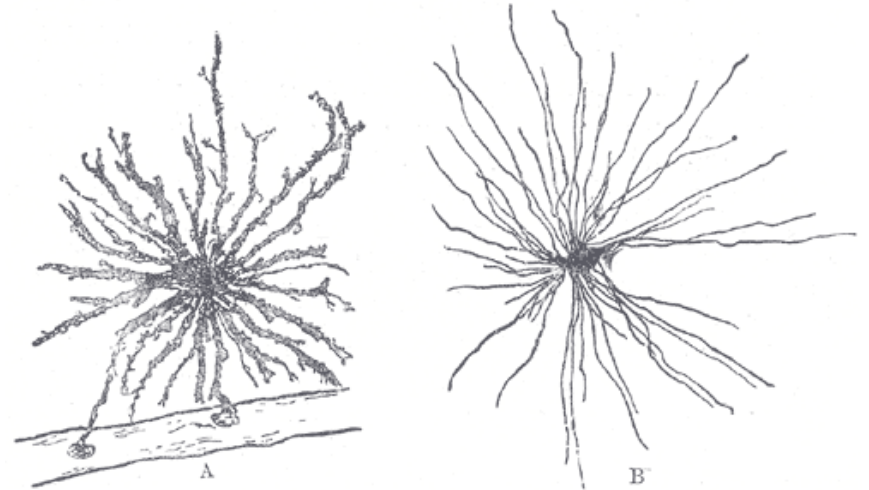Read the whole article.More than glue: Glia cells found to regulate synapses
December 30, 2011 by Editor
Glia cells are central to the brain’s plasticity, Tel Aviv University researchers have found, controlling how the brain adapts, learns, and stores information — and their design can be implemented in neuromorphic computer chips.Glia cells: the brain's supervisors (credit: Gray's anatomy/Wikimedia Commons)
Glia cells (Greek for “glue,” also known as glial) hold the brain’s neurons together and protect the cells that determine our thoughts and behaviors. But glia cells have now been found to do much more: a mechanism within the glia cells also regulate the synapses, sorting information for learning purposes, according to Ph.D. student Maurizio De Pittà of TAU’s Schools of Physics and Astronomy and Electrical Engineering.
“Glia cells are like the brain’s supervisors. They control the transfer of information between neurons, affecting how the brain processes information and learns.”
De Pittà’s research, led by his TAU supervisor Prof. Eshel Ben-Jacob, along with Vladislav Volman of The Salk Institute and the University of California at San Diego and Hugues Berry of the Université de Lyon in France, has developed the first computer model that incorporates the influence of glia cells on synaptic information transfer.
The model can also be implemented in technologies based on brain networks such as microchips and computer software, Prof. Ben-Jacob says, and can aid in research on brain disorders such as Alzheimer’s disease and epilepsy.
Regulating the brain’s “social network”
The brain is constituted of two main types of cells: neurons and glia. Neurons fire off signals that dictate how we think and behave, using synapses to pass along the message from one neuron to another. Scientists theorize that memory and learning are dictated by synaptic activity because they are “plastic,” with the ability to adapt to different stimuli.
But Ben-Jacob and colleagues suspected that glia cells were even more central to how the brain works, particularly the astrocytes (a form of glia cells) in the hippocampus. Glia cells are abundant in the brain’s hippocampus and the cortex, the two parts of the brain that have the most control over the brain’s ability to process information, learn and memorize. In fact, for every neuron cell, there are two to five glia cells.
Offering multiple perspectives from many fields of human inquiry that may move all of us toward a more integrated understanding of who we are as conscious beings.
Tuesday, January 03, 2012
Kurzweil AI - More than glue: Glia cells found to regulate synapses
This research summary was posted at Ray Kurzweil's site. Glia cells have been a little bit of a mystery, but that seems to be changing.
Subscribe to:
Post Comments (Atom)

No comments:
Post a Comment